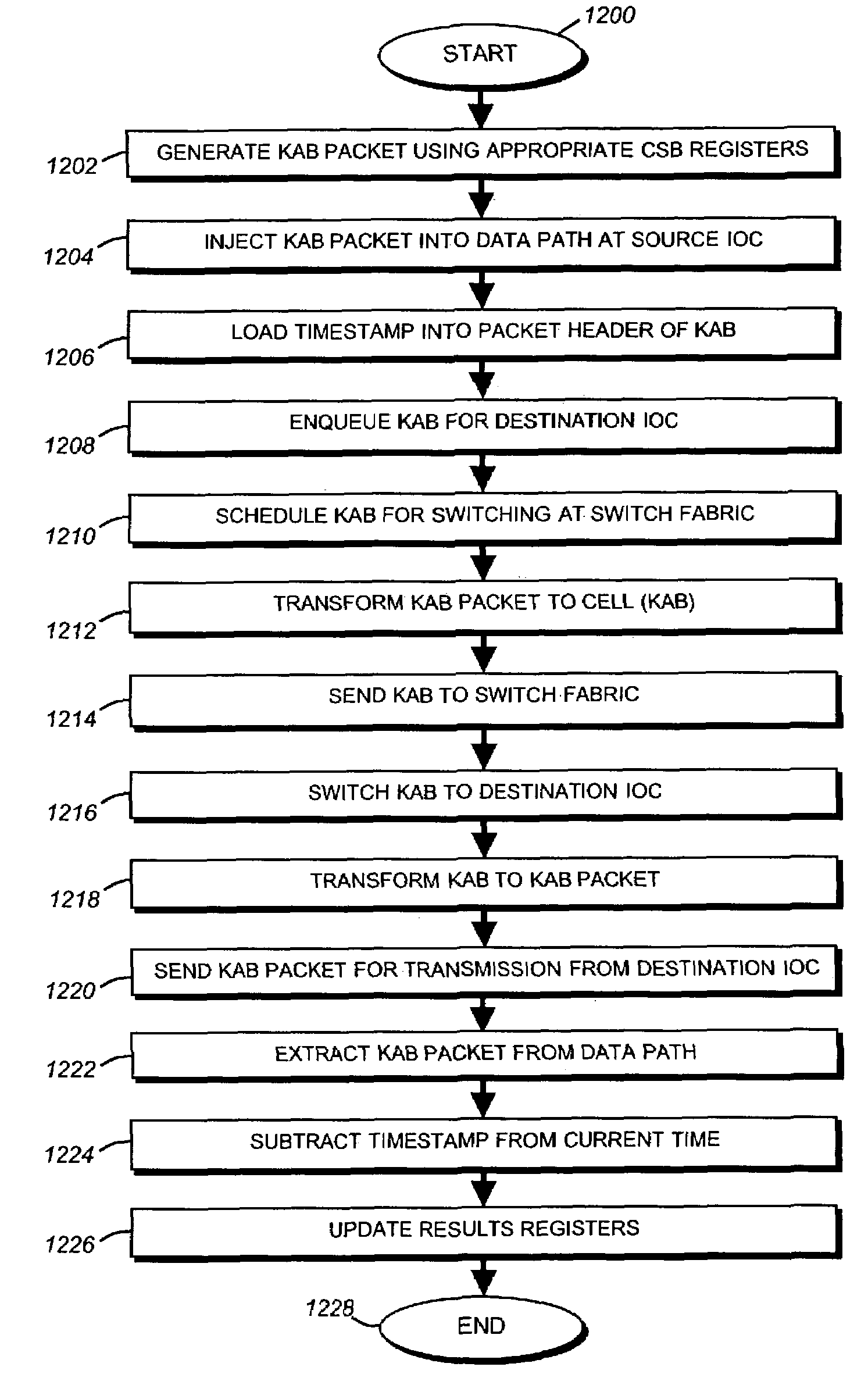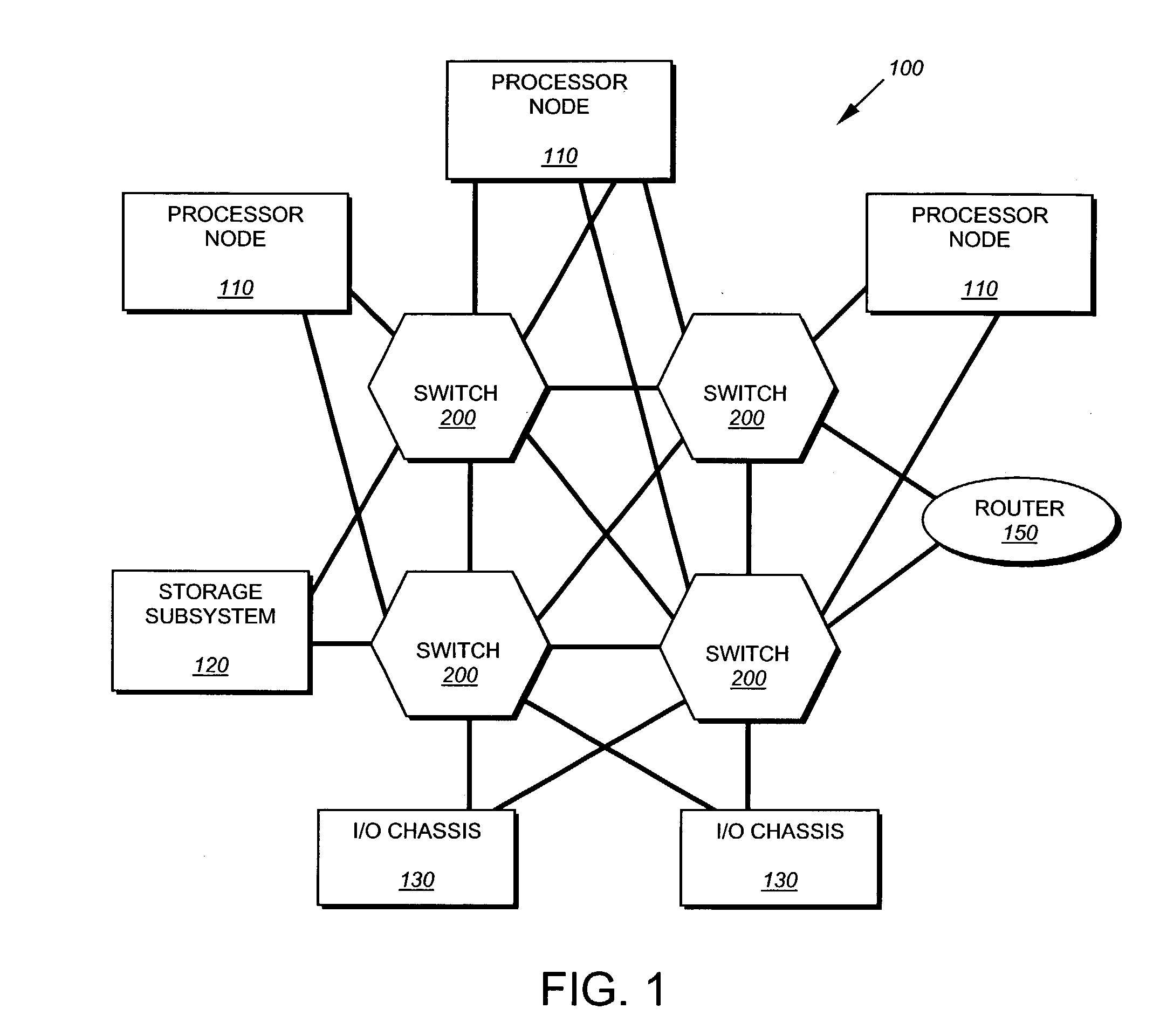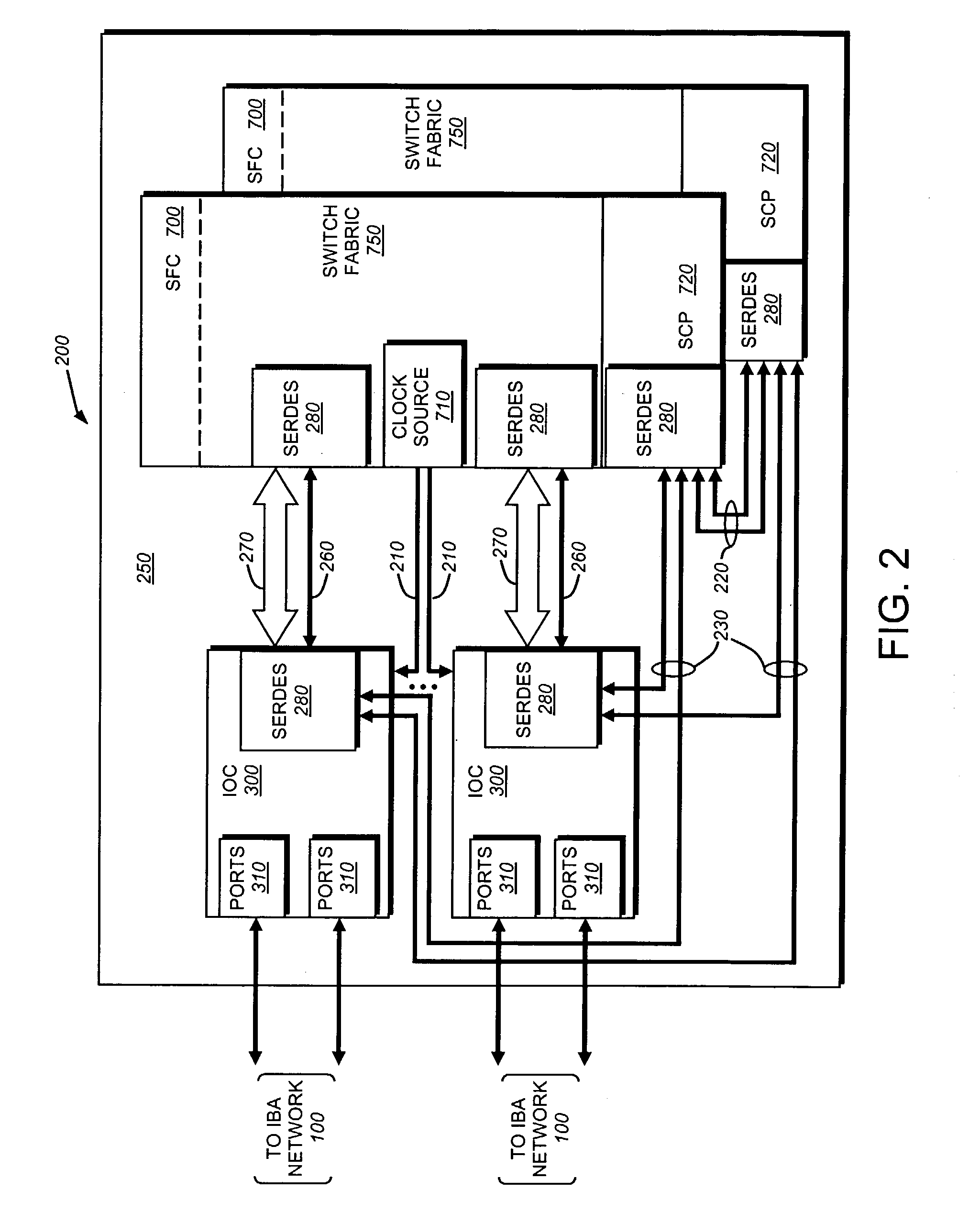Keep alive buffers (KABs)
a buffer and buffer technology, applied in the field of communication networks, can solve the problems of excessive traffic destined, congestion in the switch, etc., and achieve the effect of preventing data flow backup or other performance degradation, quick and efficient identification of failures
- Summary
- Abstract
- Description
- Claims
- Application Information
AI Technical Summary
Benefits of technology
Problems solved by technology
Method used
Image
Examples
Embodiment Construction
[0025]FIG. 1 is a schematic block diagram of a communications network that may be advantageously used with the present invention. The communications network is illustratively embodied as an InfiniBand Architecture (IBA) system area network 100 comprising a plurality of end nodes, such as processor nodes 110, a storage subsystem node 120 and input / output (I / O) chassis nodes 130, interconnected by intermediate network nodes, such an IBA router 150 and IBA switches 200. However, it will be understood to those skilled in the art that the inventive technique described herein may apply to other types of communications networks with end nodes and intermediate nodes that communicate by exchanging discrete packets of data according to predefined protocols. In this context, a protocol consists of a set of rules defining how the nodes interact / communicate with each other. For example, the nodes of communications network 100 communicate by exchanging IBA packets. An IBA packet is an indivisible...
PUM
 Login to View More
Login to View More Abstract
Description
Claims
Application Information
 Login to View More
Login to View More - R&D
- Intellectual Property
- Life Sciences
- Materials
- Tech Scout
- Unparalleled Data Quality
- Higher Quality Content
- 60% Fewer Hallucinations
Browse by: Latest US Patents, China's latest patents, Technical Efficacy Thesaurus, Application Domain, Technology Topic, Popular Technical Reports.
© 2025 PatSnap. All rights reserved.Legal|Privacy policy|Modern Slavery Act Transparency Statement|Sitemap|About US| Contact US: help@patsnap.com



